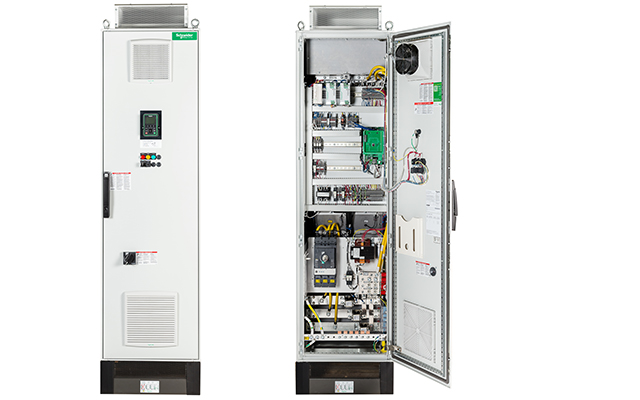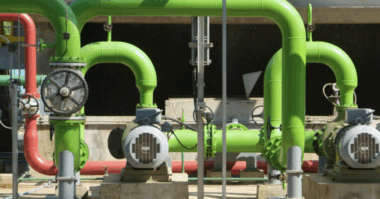Authors: Jack Creamer, Market Segment Manager, Pumping Equipment–Industry Business, Schneider Electric
Later this month, the Pump Industry will converge on Houston for Pump Summit Americas 2018 – a two-day event filled with learning, networking and fun. Here are five good reasons to make time to attend the workshop, “Transformation from Six-Pulse to Low Harmonic, Three-Level, Active Rectification Technologies” during the Summit:
- Focus on Harmonic and System Performance
Incorporating a VFD into a smart pumping system increases control, functional reporting for predictive maintenance and, most importantly, efficiency. A challenge to this has always been harmonics – the distortion of a sinusoidal waveform by waveforms of different frequencies from nonlinear loads. Harmonic content in power distribution systems can lead to various undesired outcomes, such as disturbances in communications, increased operational expenses and loss of revenue. A high level of harmonic content can affect the efficiency and performance of other electrical devices connected to the same input power supply. Understanding the impacts is critical in designing systems with variable frequency drives.
- Look at Variable Frequency Drives Differently
Variable frequency dives (VFD) have been developed to increase both process control and energy efficiently. VFDs have evolved over the years similar to other electrical devices, they are becoming more connects and bringing application support to various industry. In the IOT era, the requirement for drives and other devices to connect and share data has revolutionized the VFD industry.
In recent years, the functionality – and therefore importance of VFDs has – has improved significantly. New software imbedded into the drives has allowed for segment-specific programming (ie: Pumping HVAC, etc.) to increase their benefits. Further, with the emergence of the IIoT, these have also played in increasing role in process reporting for preventative management. Now, new technology is helping to address the critical issue of harmonics, which have been issues with power conversion devices since the birth of VFD. This new low harmonic technology addresses these issues in a very unique way
- Advancements in Active Rectification, Introduction
Low harmonic drives featuring new three-level active rectification technology address harmonics differently to provide greater results. By replacing the typical six input diodes with insulated gate bipolar transistors (IGBTs), the input current wave shape can be controlled. Three-level active rectification is then used to improve input current waveforms. This three-level topology also uses an additional common mode (CM) filter stage allowing for high efficiency. To generate sinusoidal input currents in phase with the mains voltage, the current is shaped by the switching actions of the input IGBTs.
Three-level active front end drive solutions incorporate an input LCL filter design. This efficient, low pass input filter allows low-frequency voltage emissions to pass while attenuating (rejecting) high-frequency emissions. The performance of three-level drive systems is very dependent on this reduction of total voltage emission at the input terminals.
- Predictable Results and Clear Benefits
Three-level Active Front End drive solutions – with or without regenerative capabilities –are flexible for any industry and any application that requires a compact low harmonic solution. The 3-level active front end drive solutions bring a total current harmonic distortion (THDi) to 2.3%.
Benefits include no additional high-frequency common mode voltage, lower cost of total ownership and dramatically reduced harmonics bringing a new chapter in power conversion devices
- Meet the Thought Leaders
During this event, you will have the opportunity to meet directly with the presenter, Richard Jennens, who helped bring this new technology to the industry. Richard, a Product Manager for High Performance Drives with Schneider Electric, draws on 24 years of experience in Industrial and Process Automation in Services, Project and Product Management in Asia and the U.S., with a focus on leveraging VFDs to provide process efficiency and productivity improvements.
The “Transformation from Six-Pulse to Low Harmonic, Three-Level, Active Rectification Technologies” workshop will take place on Tuesday, June 26 at 11:00am. We look forward to seeing you there!
About the Author
Jack Creamer is Schneider Electric Segment Marketing Manager – Pumping Equipment, based in the United States. Mr. Creamer has more than 30 years in the Electrical Industry, and has been involved for 10 years in the Pumping Industry. He is involved in key industry organizations such as the Hydraulic Institute and Submersible Wastewater Pump Association, where he holds both Committee Chair and Board level positions. In his time in the Pump industry, he has help Schneider create numerous solutions that both enhance pumping efficiency and address issues such as maintenance and downtime.
New VFD Technologies in Harmonic Mitigation – Part 1: The Issue of Harmonics




